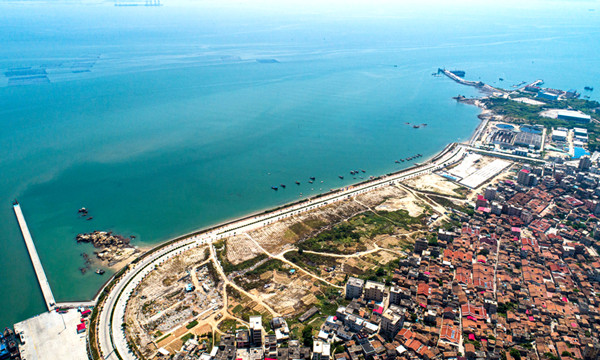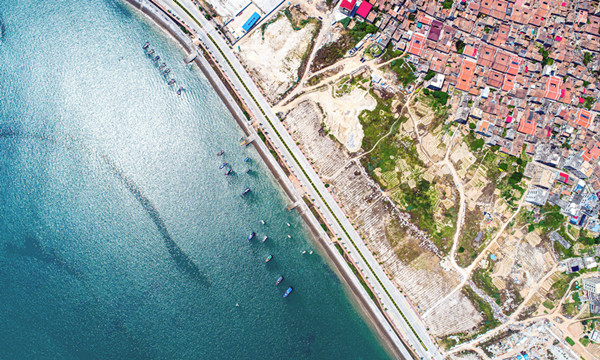The Quangang marine ecology restoration project in Quanzhou, East China's Fujian Province, broke ground on Aug 10.

A view of the beach under restoration and preservation in Quanzhou, East China's Fujian Province [Photo/sasac.gov.cn]
Contracted by China Railway 22nd Bureau Group Corporation Limited, a subsidiary of China Railway Construction Corporation Limited, the restoration project located in the coastal area of Houlong Bay in Quangang District is one of the first national key ecological system protection and restoration projects to be launched in China between 2021 and 2035.
Houlong Bay has the longest shoreline and the largest beach area in northern Quanzhou. However, it has been facing serious coastal ecological problems like water and soil erosion and coastal erosion. Extreme weather such as typhoons and storms has also degraded the area's coastal ecosystem.

A bird's eye view of the area where the marine garbage interception and collection system is to be adopted [Photo/sasac.gov.cn]
The project will include four sections: construction of a wave resistance barrier, beach restoration and preservation along the Houlong Bay coast, ecological renovation of the Houlong Bay seawall and development of the beach garbage interception and collection system. The sections are expected to form a marine ecological disaster reduction system.

A view of the Belzungia reef wave resistance barrier along the coastal area of Houlong Bay that is still under construction [Photo/sasac.gov.cn]
According to the project planning, the marine ecology restoration will involve construction of an 8.3-kilometer spool-type Belzungia reef, restoration of the 3.1-kilometer coastline shore, ecological transformation of the 2.56-kilometer seawall and development of a 1-kilometer beach garbage interception and collection system test section.
Upon completion, the contractor of the project will continue to strengthen marine environmental protection and ecological restoration to reduce environmental pressure caused by industrial and urban construction at the port.
(Executive editor: Wang Ruoting)